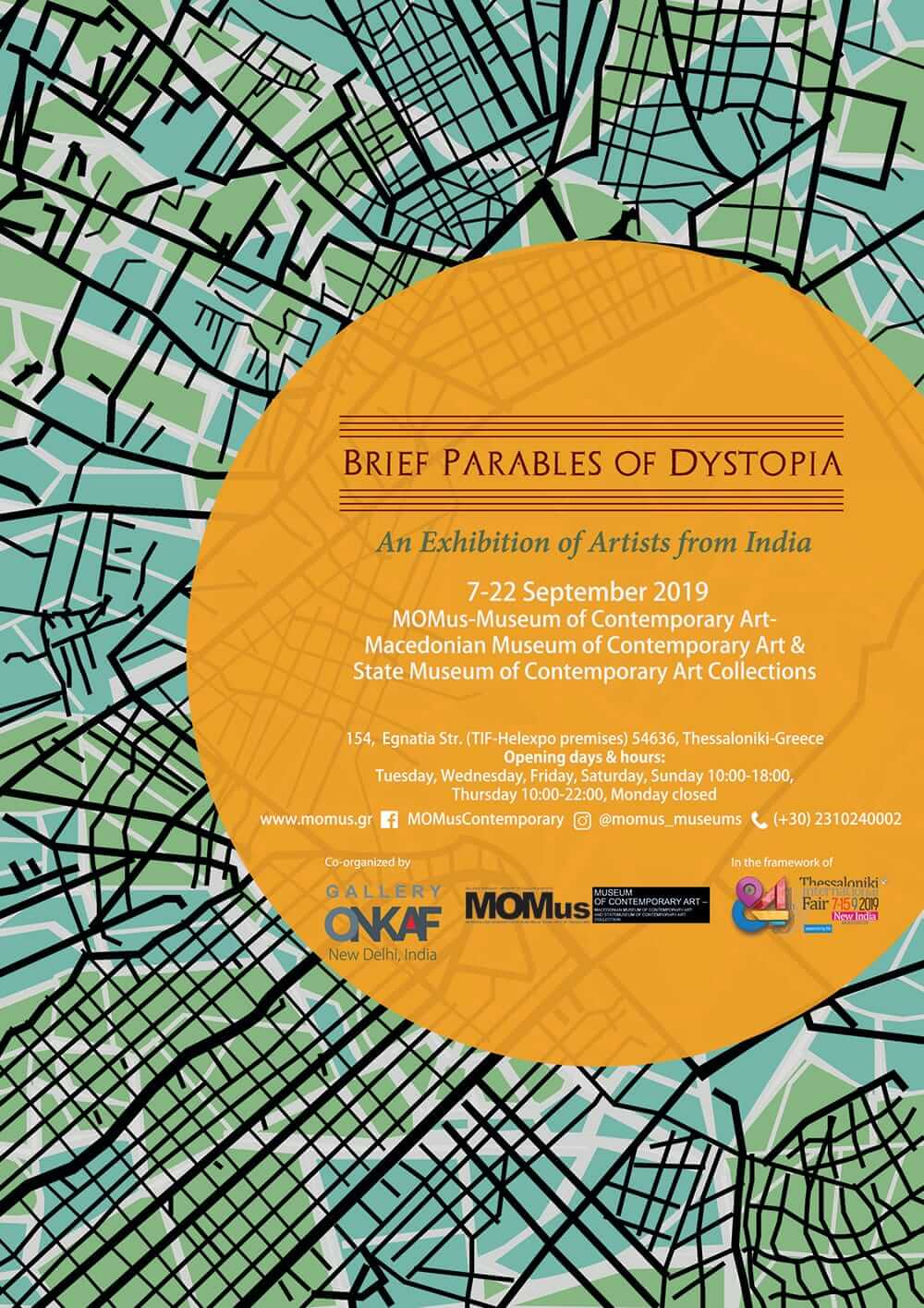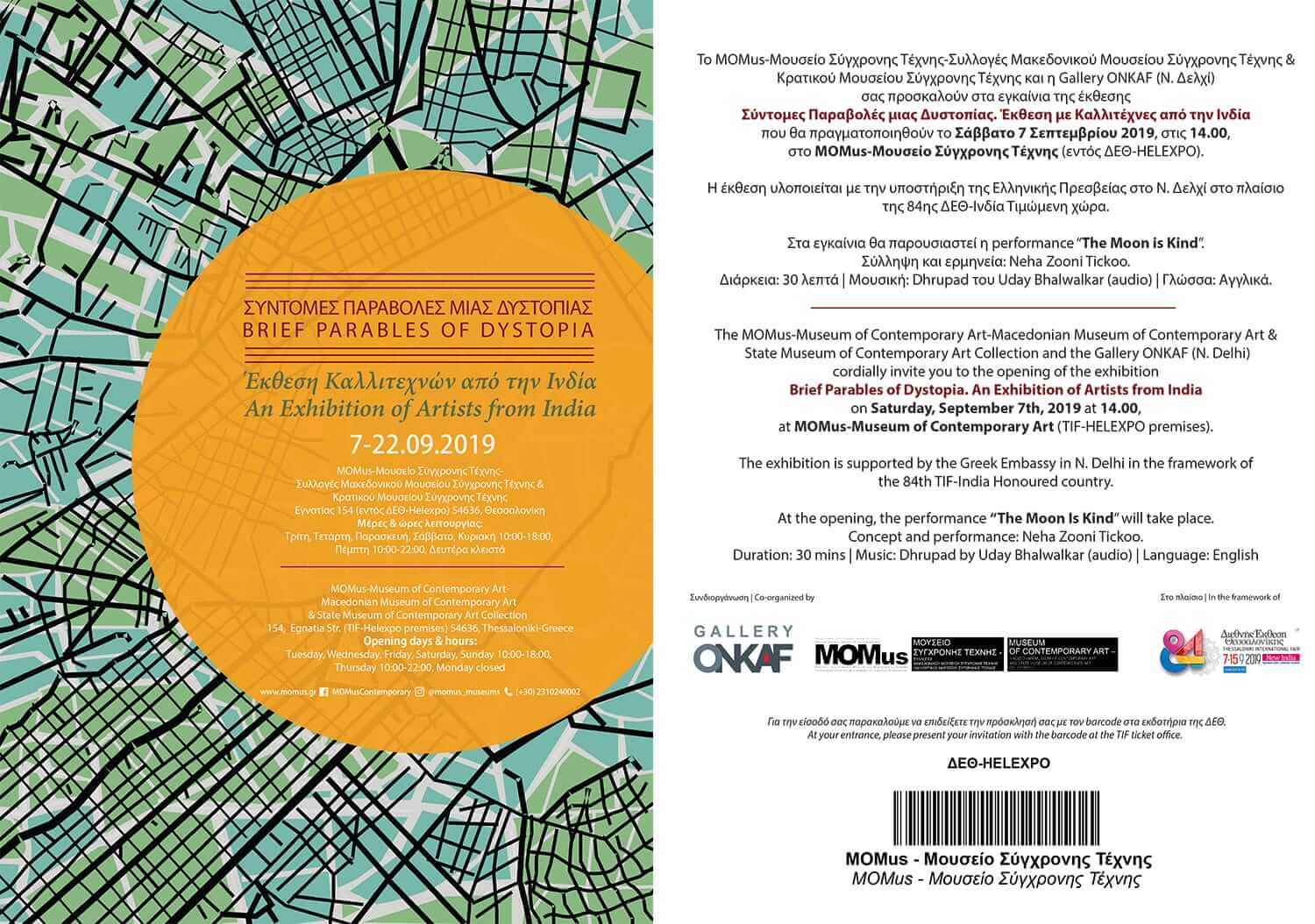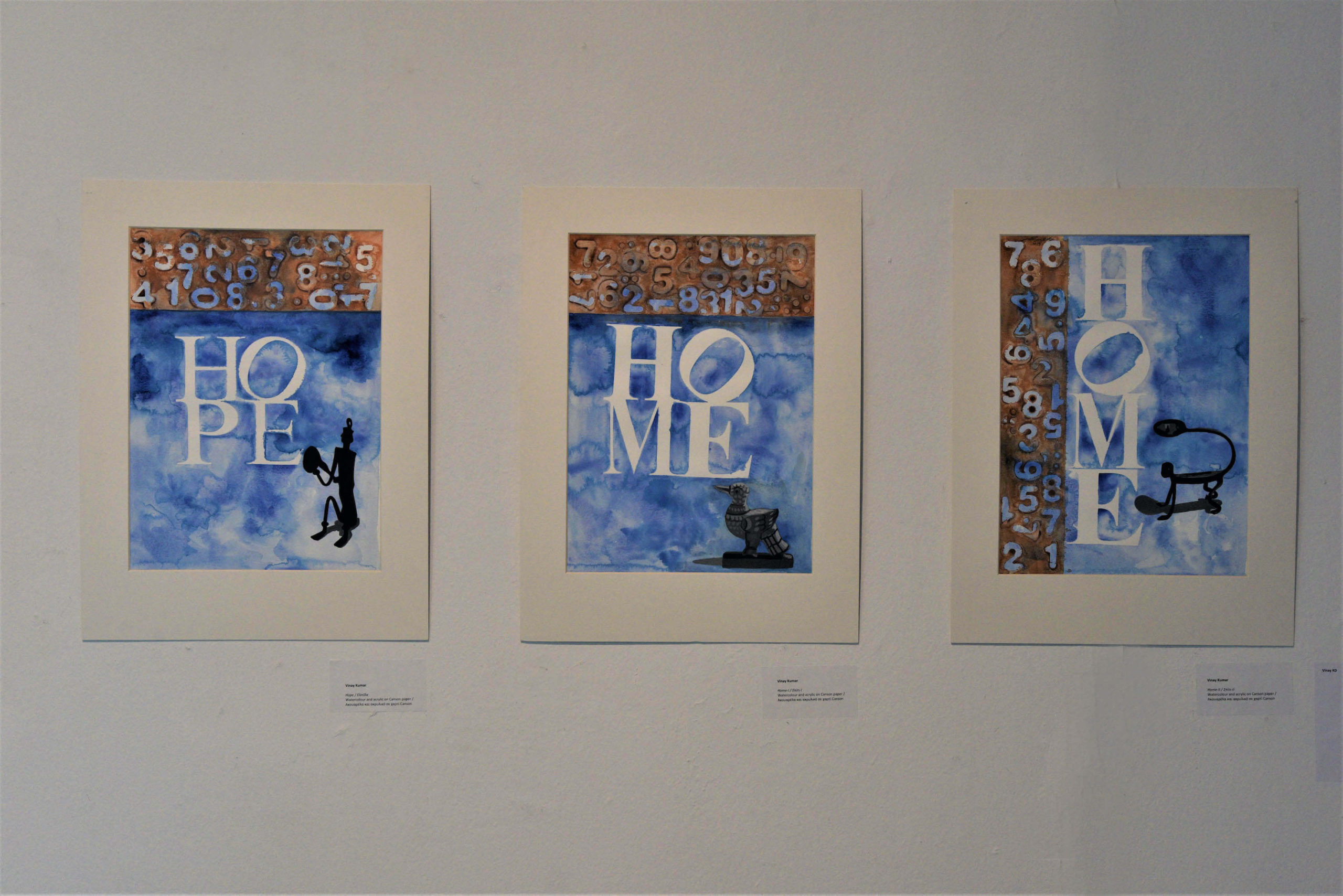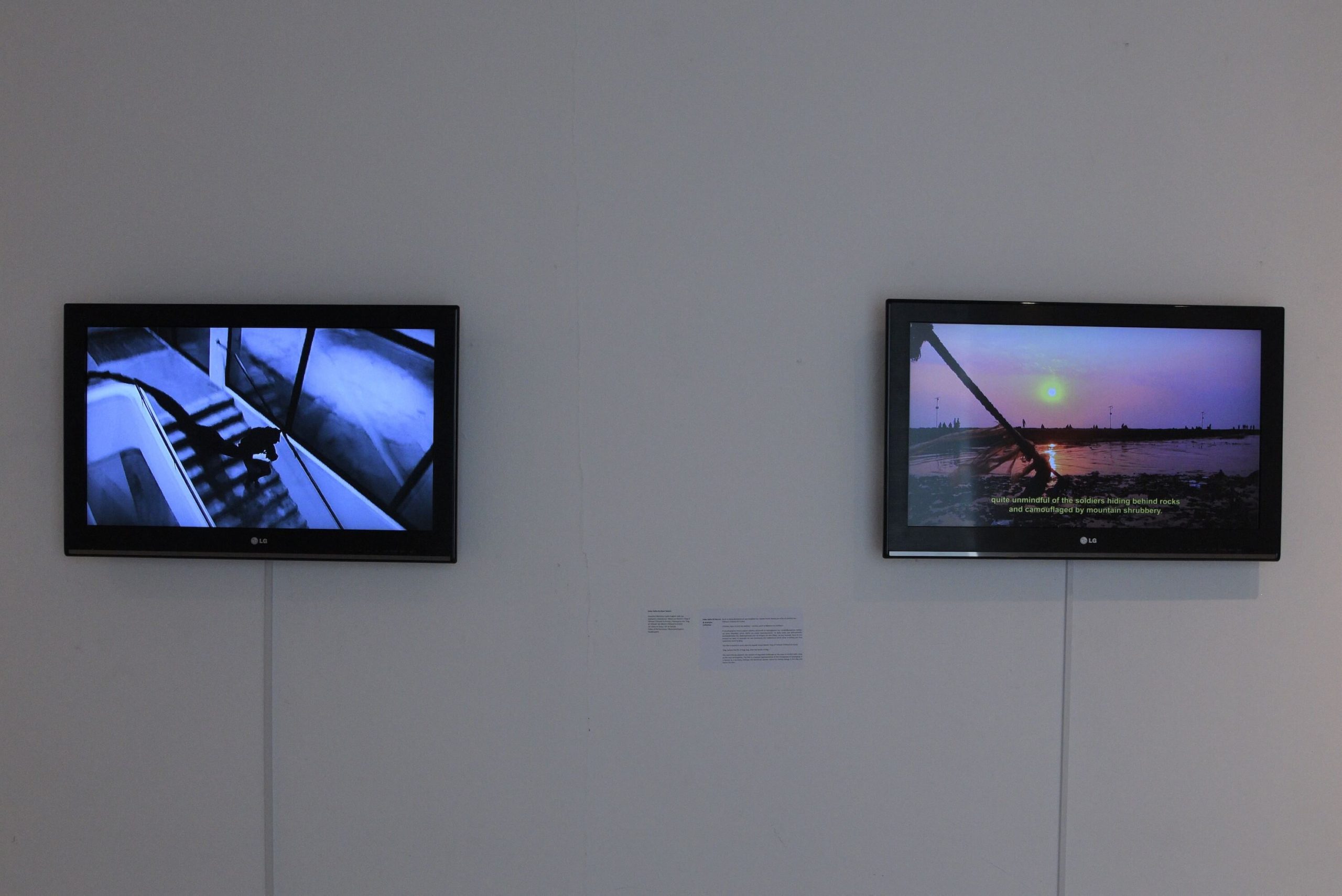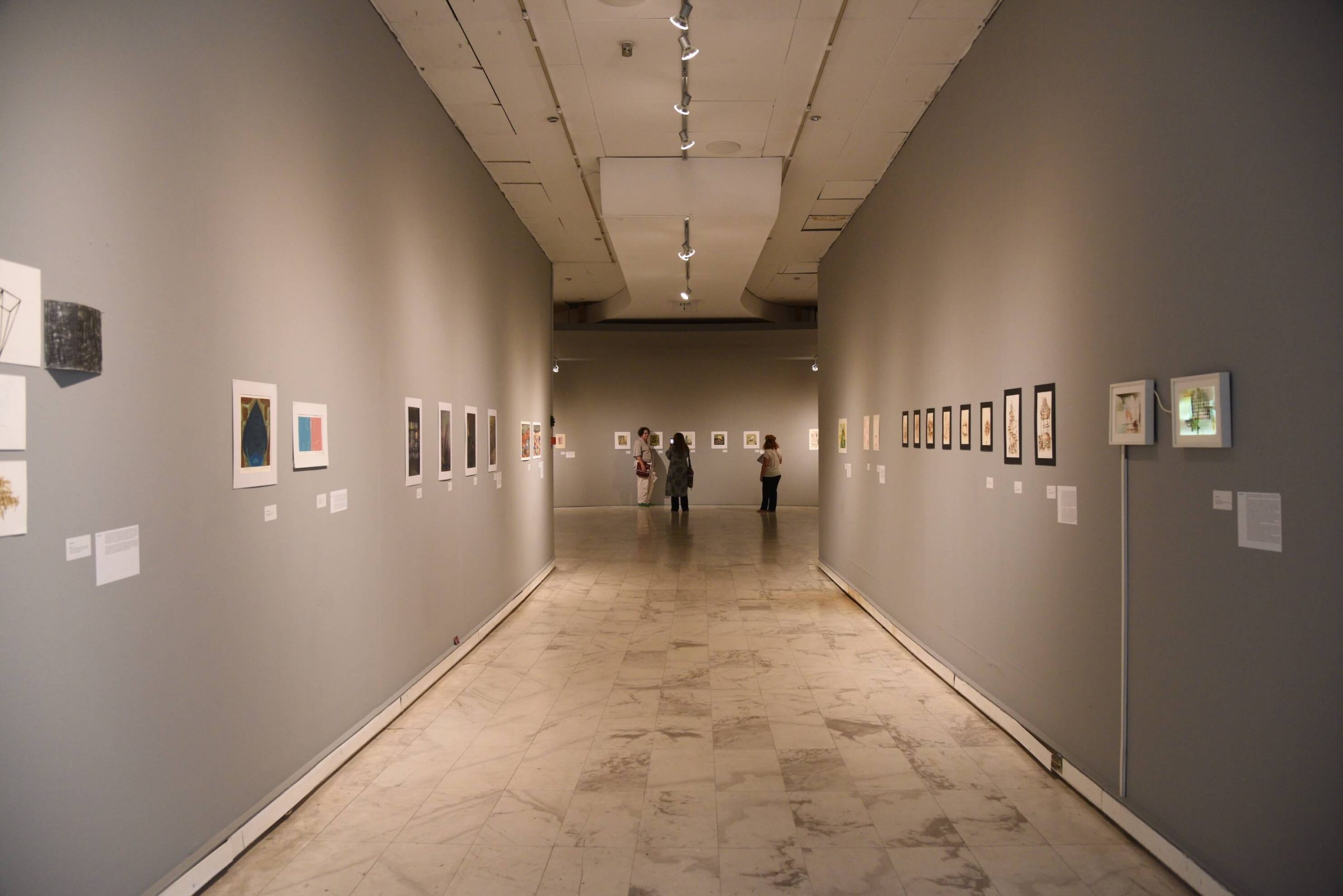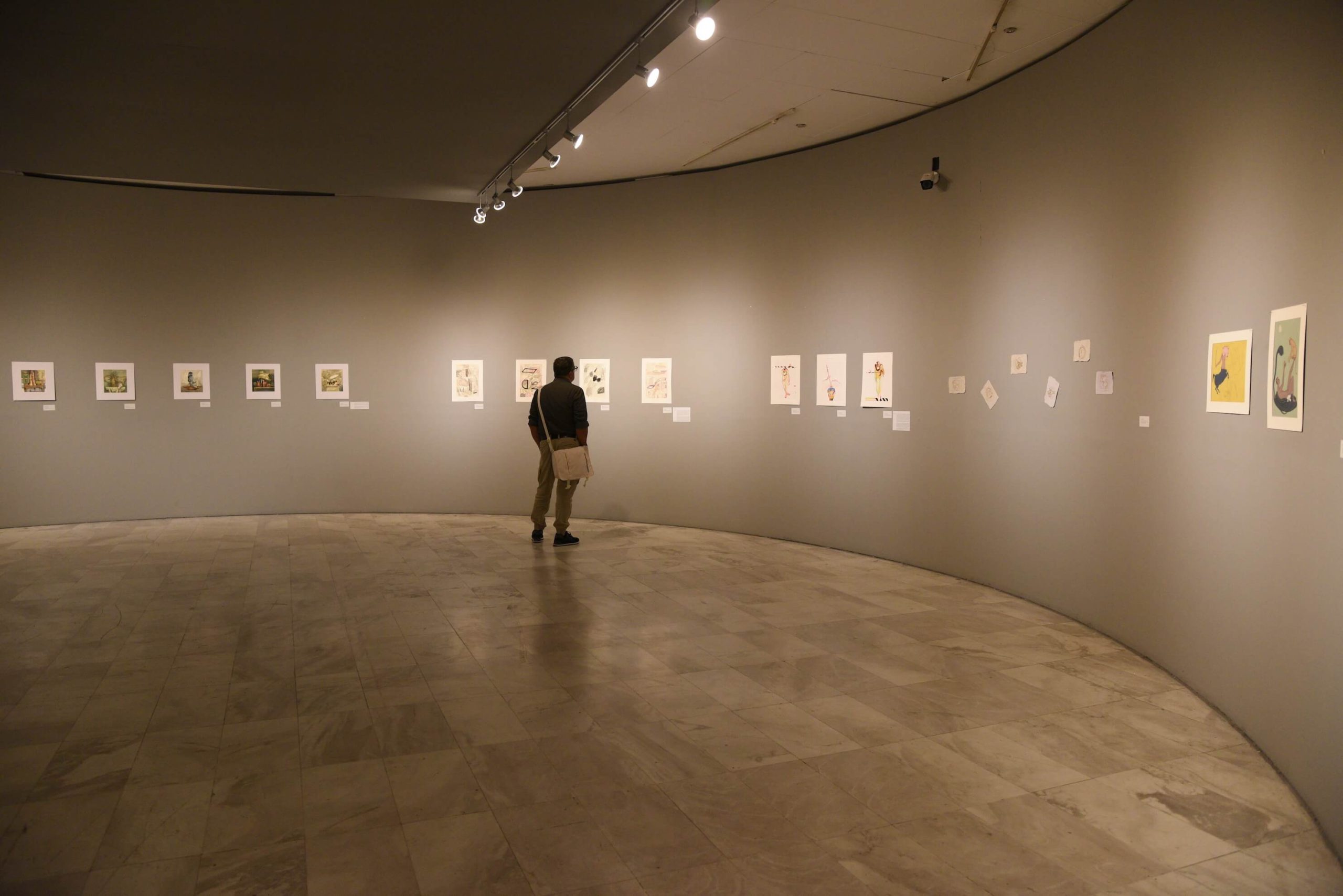Brief Parables of DystopiaMOMus-Museum of Contemporary Art-Macedonian Museum of Contemporary Art and State Museum of Contemporary Art154, Egnatia Str. (TIF – Helexpo premises) 54636, Thessaloniji – Greece7 Sept – 22 Sept 2019
CONCEPT
Tum Mere Paas Raho/ Mere Qatil Mere Dildaar Mere Paas Raho /
Stay close to me, my slayer/assassin, my beloved, stay close.
Could there be a song for the apocalypse? A folklore imagined?
The postmodern apocalypse gets defined by invaded private as well as public sphere of life, disproportionate state control, indoctrination of values, as we are inching towards a future well imagined as dystopian. There is the calm of a murderous calamity yet to befall, replete with the anomaly of awaiting the inevitable like an eager lover anticipating doom.
What does dystopia mean to the world’s two most ancient civilisations: the Greeks and the Indus Valley Civilisation? Perhaps underneath the parenthesis of two most aged cultures is also to bear witness of triumphs and tribulations of the entire humanity. The dynamics layering between socio political and environmental factors plaguing the human condition has long remained a subject widely delved upon. If each testimony of the human condition was revisited as a blink of an eye, and arranged in small framed multitudes curated as part of this exhibition, it would perhaps conjure up some of these very stark and diverse visuals in display.
Launching this first off exhibition as a site for collaboration between India and Greece at the MOMus-Thessaloniki, these young and emerging artists from India demonstrate exemplary craft and insight into an ecology of artistic futures, nudging one to come closer to the frame and look again, and with careful intent of staying close to one’s assassin.
Ms Neha Zooni Tickoo
Dr Sumita Chauhan
ExhibitionGallery
Concept and performance: Neha Zooni Tickoo
Title: The Moon is Kind
This performance, essentially an Indian classical Kathak dance piece, is based on the poem ‘Moonlight Sonata’ by Yiannis Ritsos, one of the most revered political poets of Greece. Kathak is a performance style that incorporates gestural storytelling majorly, and Ritsos’ poem takes emergence in the most befitting manner in terms of narration. The music used is dhrupad style of Indian Hindustani music, which in itself embodies the calm abstraction of reverberating cosmic sounds. The long poem written by Ritsos in 1956, is an older women’s confessional monologue set in sombre tones, sometimes lamenting a dead husband and sometimes to the memory of youthful companionship- both imagined and lived.
The performance is also a response to the exhibition on display ‘Brief Parables of Dystopia’ in terms of adding a dimension of lyrical poetics to the same. There is also the hint of understanding the present through the vantage point of past, layered within the dialectics of utopia and dystopia.
This event has been made possible with the support of Gallery ONKAF, Delhi and MOMus, Thessaloniki.
Duration: 30 mins approx.
Music: Dhrupad by Uday Bhalwalkar (audio)
Language: English

